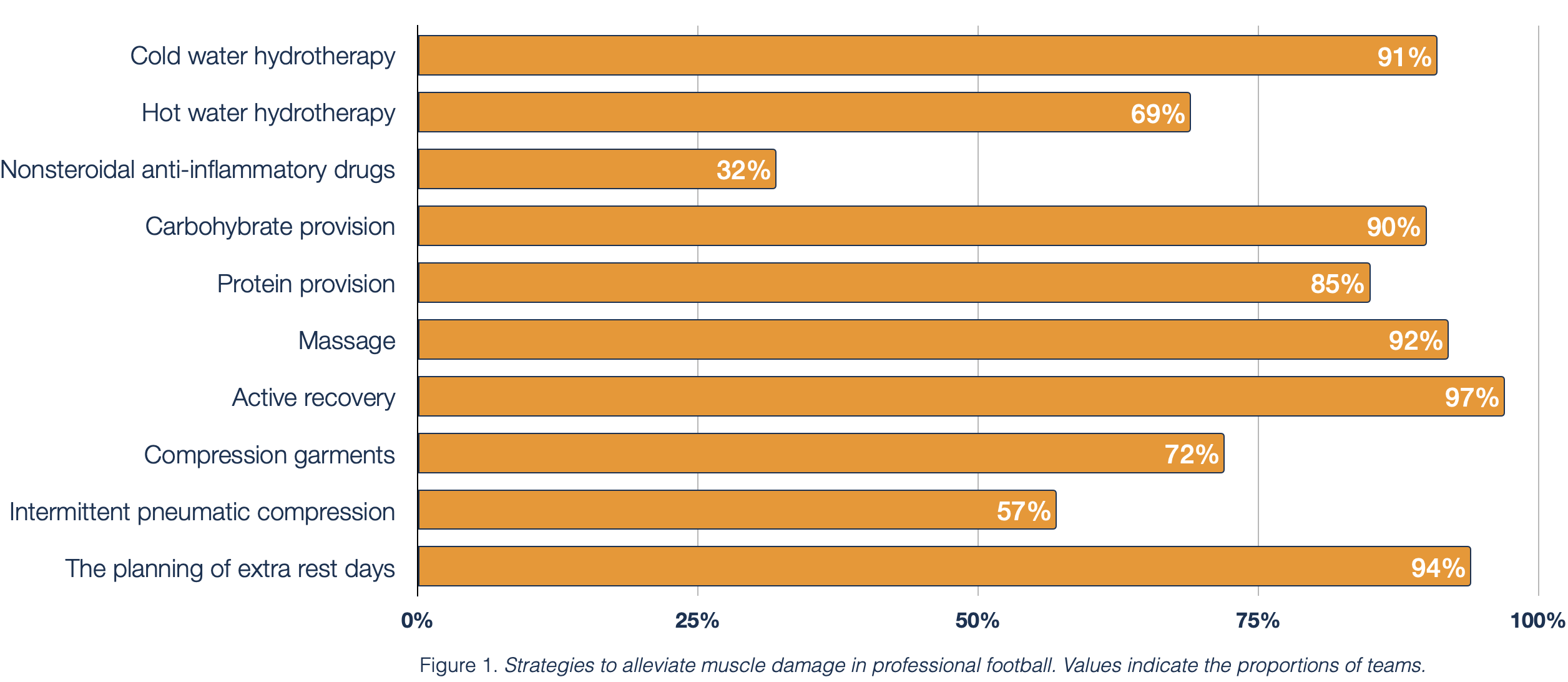Post-match recovery
Strategies employed in elite football
As part of our series of blog posts ‘Monitoring the training process in team sport: from description to prescription’, we discussed several methods to monitor fatigue in football or other team sports.
Following key messages were provided:
- Recovery from post-match fatigue can take up to 72 hours.
- Recovery times differ between physiological systems (cardiovascular & neuromuscular) depending on the type and intensity of the training stimulus.
- Fatigue is often quantified based on performance decrements in maximal strength, agility, or speed but studies showed that full recovery of performance-related fatigue does not always indicate full recovery of actual physiological fatigue.
- Methods to monitor fatigue are subjective well-being indicators (today known as athlete-reported outcome measures), HR indices (cardiovascular fatigue), and indicators based on jump or submaximal running tests (neuromuscular fatigue).
In this blog post, we will report the main findings of a recent study of Adam Field and colleagues that was published in International Journal of Sports Physiology and Performance (ahead of print). The aim of the study was to survey football practitioners on recovery strategies used during a weekly microcycle, as well as the perceived effectiveness and barriers of these strategies.
A total of 80 practitioners took part in the study. Practitioners were employed by elite adult, elite academy, or semi-professional teams. Both sports-science, sports-medicine, and sports-coaching staff took part.
The alleviation of muscle damage was considered the most important objective for using recovery strategies. The intermittent high-intensity nature of football matches induces a substantial muscular stress to the body. The rapid succession of matches requires accelerated recovery of the stressed body systems because excessive damage is known to increase injury risk (second most important objective of recovery strategies) and to impair performance (third most important objective).
The strategies used for the alleviation of muscle damage are the following:

These numbers show that a multitude of strategies are used to accelerate recovery. The study also reported that strategies are often applied during the days after the match (MD+1, MD+2, and MD+3), indicating practitioners’ knowledge on the time course of recovery after matches.
Moreover, the study examined the perceived effectiveness and barriers of the different recovery strategies. For some strategies (e.g., carbohydrate and protein provision), a clear association was observed between its frequency of use and perceived effectiveness, indicating the considerable evidence base for this type of interventions. For other strategies (e.g., hydrotherapy), no association was observed between frequency and effectiveness. This can be explained by the conflicting evidence about the usefulness of these strategies, and the fact that the benefits of these strategies are context dependent.
For example, the interference of recovery strategies such as hydrotherapy with certain training adaptations was reported as a main barrier for implementation. Hierarchical challenges (e.g., staff commitment) and resource constraints (e.g., no access to facilities) were also apparent, thereby indicating that both theoretical and practical aspects influence the employment of recovery strategies.
In summary, practitioners use a multitude of strategies to accelerate recovery. However, most strategies are not supported by robust evidence. This can be explained by the context-dependent nature of the usefulness of strategies, and the complexity of the recovery process (= it is not easy to examine the effect of one recovery strategy in isolation). To conclude, the systematic and structured application of recovery strategies is based on a combination of evidence-based practice and practice-based evidence.
Interested in recovery strategies?
Want to see how our platform can help you visualise the time course of recovery?
Care to keep updated?
Subscribe to our newsletter.
You'll get updates about our recent blog posts and platform updates.